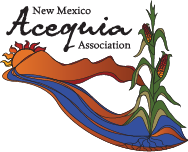On October 25th, 2023, The Sembradores crew gathered items needed for corn processing. We wanted to make posole and talked a lot about the nixtamal process. We decided to use blue corn seed. We also used cal (food grade lime), water, a big pot, bar of soap (any kind, but i prefer not fragrant), a safe metal grate base, wooden spoon, and wood/fire.

The timing was perfect, as it was colder, so having a fire going really helped to keep us warm.
We usually use a bar of soap to coat the outside of the pot, the thicker the layer, the better. This makes for easier cleaning of the pot, after it has been fired for hours.
We started with 6lbs of blue corn and then decided it looked like it wasn’t enough, so we doubled it and made 12 lbs of posole. Usually for every 2 lbs of corn I will use about 8-10 grams of cal. We used ¾ cup cal to 12 lbs of corn. It’s important to measure. If you don’t add enough cal, the process will take longer, and if it’s too much it can change the color of the corn, or make it mushy.

We made a nice fire, and filled the pot with water. Once the water started to boil, we stirred in the powdered cal. Shortly after, we added our corn. It quickly had a slight change of color.
The cal is an alkali substance that helps take off the outer shell/hull of corn, which makes it easier for humans to digest. This makes sure that we are getting more nutrition, and is easier to cook. Blue corn is special because it has less indigestible starch. It also has 20% more protein, and anthocyanins are found in blue corn. These contain antioxidants with anti-inflammatory properties.

We spent about 3 hours constantly stirring this boiling pot of posole, regularly checking the corn, and waiting for the outer layer/hull to start breaking down. About half way through the process, a thick layer of hull started to form at the top. This is a good sign and exactly what we wanted.
During the process, the corn gives off the yummy corn tortilla/posole smell.

At the end of this process, it’s important to rinse the corn out properly. We spent about 5-10 minutes doing a thorough rinse. This is to make sure all the cal and hull slurry is washed out. We used a large metal mesh screen framed by boards, and placed this on top of wooden burros. At this point you have posole, or nixtamalized corn.
You can leave the posole out to dehydrate which is the method I prefer, but it also takes a longer time to rehydrate/cook if you’re making posole stew. It can also be placed in food grade freezer bags, and used as needed.
The nixtamal corn can be used in a variety of ways; posole is easy and yummy in winter months. If the corn is ground it can be used to make corn tortillas, or traditional tamales.

Posole making is magical, easy, and a wonderful way to use abundant corn. It easily reminds me of cold winter days, and warming up with a nice yummy bowl of posole. It doesn’t just warm your body, but your soul, and heart get full of delicious tradition! I’m grateful to my family for teaching me at such a young age to create value added goodies for winter. I think it’s something I’ve learned over many years. So if it’s your first time, know it takes practice and patience.
Every year in our Sembradores program we learn a variety of methods to process foods and medicines so that our apprentices know how to carry on our food traditions and make the most of the harvest.


Neal W. Thielke
Thank You Donne – this is a valuable, well thought out sharing